Edit: The marked solution is correct, however if anyone is having similar problems using SQLite avoid calling the database using using as shown in my example as it messes up lazy loading as the context is closed before it can lazy load. To fix this create a new Object as that will cause lazy loading to fully copy the object passed back from the db so either do that in "using" or manually close the db after you have copied.
I have made a simple example to describe the problem
<Grid>
<StackPanel>
<ListView x:Name="People" ItemsSource="{Binding}">
<ListView.ItemTemplate>
<DataTemplate>
<StackPanel>
<TextBlock Text="{Binding Name}"/>
<ListView x:Name="PhoneNumbers" ItemsSource="{Binding PhoneNumbers}"/>
</StackPanel>
</DataTemplate>
</ListView.ItemTemplate>
</ListView>
</StackPanel>
</Grid>
So I have a ListView bound to an object let's call it Person() this object has a property of type collection that I want to access. I want to bind a list property in this case just a list of strings to x:name="PhoneNumber" how can I do this? I'm setting the ItemSource of the parent ListView in the code behind. I would like to know any information you have on this topic as I have not been able to find a whole lot on the subject read all of the c# docs, searched stack most I was able to find was to use an ObservableList which I tried, it didn't work. Looking for a data dump any information you think could get me moving in the right dirrection would be greatly appreciated as my actual use case is much more complicated than this example.
I'm aware this would be easier using MVVM but for now I want to get a basic prototype up and running without getting in to MVVM. The end goal is to move to MVVM.
Edit : Literally just binding in code behind atm
Simple example VV
public LoadingWindow()
{
InitializeComponent();
using (var db = new PeopleContext())
{
var Test = db.People.ToList();
if (Test != null)
{
People.ItemsSource = Test;
}
}
}
Example Class
public class People
{
public string Name { get; set; } = "";
// I did read that using an observable list was needed but I tried it and it didn't work
// I'd prefer not to use an observable list
public List<string> PhoneNumbers { get; set; } = new List<string>();
}
